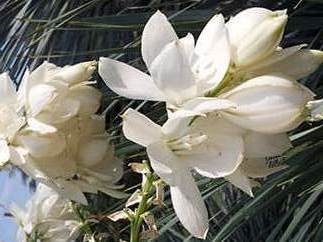Joshua tree
(Yucca baccata brevifolia)

Description
Yucca brevifolia is a plant species belonging to the genus Yucca. It is tree-like in habit, which is reflected in its common names: Joshua tree, yucca palm, tree yucca, and palm tree yucca. This monocotyledonous tree is native to the arid Southwestern United States, specifically California, Arizona, Utah, and Nevada, and to northwestern Mexico (Baja California, Baja California Sur, Sinaloa, and Sonora). It is confined mostly to the Mojave Desert between 400 and 1,800 m (1,300 and 5,900 ft) elevation. It thrives in the open grasslands of Queen Valley and Lost Horse Valley in Joshua Tree National Park. Other regions with large populations of the tree can be found northeast of Kingman, Arizona in Mohave County; and along U.S. 93 between the towns of Wickenburg and Wikieup, a route which has been designated the Joshua Tree Parkway of Arizona. A dense Joshua tree forest also existed on the Cima Dome in the Mojave National Preserve until the Dome fire of August 2020. The Joshua tree is also called izote de desierto (Spanish, "desert dagger"). It was first formally described in the botanical literature as Yucca brevifolia by George Engelmann in 1871 as part of the Geological Exploration of the 100th meridian (or "Wheeler Survey"). The name "Joshua tree" is commonly said to have been given by a group of Mormon settlers crossing the Mojave Desert in the mid-19th century: The tree's role in guiding them through the desert combined with its unique shape reminded them of a biblical story in which Joshua keeps his hands reached out for an extended period of time to enable the Israelites in their conquest of Canaan (Joshua 8:18–26). Further, the shaggy leaves may have provided the appearance of a beard. However, no direct or contemporary attestation of this origin exists, and the name Joshua tree is not recorded until after Mormon contact; moreover, the physical appearance of the Joshua tree more closely resembles a similar story told of Moses. Ranchers and miners who were contemporaneous with the Mormon immigrants used the trunks and branches as fencing and for fuel for ore-processing steam engines. They referred to these fallen or collapsed Joshua trees as tevis stumps. The Joshua tree is native to the southwestern United States (Arizona, California, Nevada, and Utah) and northwestern Mexico. This range mostly coincides with the geographical reach of the Mojave Desert, where it is considered one of the major indicator species for the desert.
Taxonomic tree:







